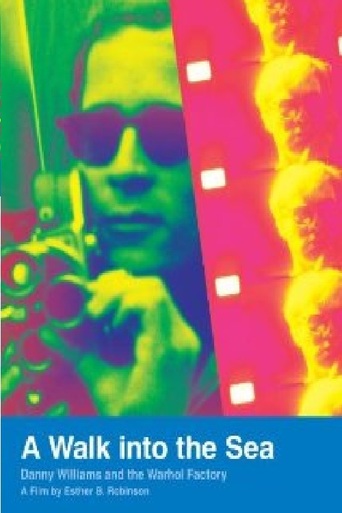dthenapier
Danny Williams was big in Velvet Underground folklore as the legendary (and brilliant) lighting technician who disappeared following the first EPI tour in the late 60's, so to see him get a proper documentary is enlightening and a wonderful thing. Warhol comes off like the typical self-important/shallow person that he likely was during the 60's during the height of his fame. Upon viewing this doc one gets the impression that some of the various Factory "denizens" - (aside from Gerard Malanga who comes off like an honest person who cared about Williams' sad fate) the majority of them never out-grew the obvious sad & pathetic 'Warhol worship'. For what it's worth - the review on here by jm10701 reeks of a certain ignoramous who has a jealousy trip, or a bitter person who thinks they have the first clue about Warhol and what possibly could have happened to Williams. jm10701 is also apparently too stupid to realize that Williams didn't "flunk" anything, he graduated from Harvard & worked in the Factory alongside Warhol during two of Warhol's biggest $$$ years in the 60's. Two accomplishments that most people don't get to achieve in life. The documentary also leads one has to question if Warhol's cruel treatment of Williams likely played a role in Williams' apparent suicide and/or downward spiral into drug use, and it's obvious that there's many un-answered questions and Warhol only made a sad story worse by not assisting the family at a time of need. Highly recommended.
Amanuencis
A Walk Into The Sea asks what and why. It follows a talented filmmaker into a world that most of us can only wonder about. The pacing and music slow us down and create images that allow us to feel, without analyzing, what might have led Danny Williams to walk into the sea and disappear. Esther Robinson, Danny's niece, sets out to learn more about her uncle's death in 1966. The video, with superb editing by co-writer Shannon Kennedy, and entrancing music by Todd Griffin, creates a murky, mysterious, collage of commentary by Warhol associates during the early 60's who skate around Danny's days and nights with Warhol and the Factory. Kennedy's juxtaposition of Factory members images from the 60's with Robinson's interviews from 2005-2007 create a gnawing sense of discomfort and a wish for a final answer. This is the beauty of the film.
jm10701
In this movie, some relatives of a minor flunky at Andy Warhol's Factory try to imply that Warhol was somehow responsible for the guy's disappearance hundreds of miles away in the middle of nowhere.It gives a strong impression (but doesn't say) that the relatives first tried extorting money from Warhol's estate and only decided to make this smear movie when that attempt failed. This attempt should fail too, joining the missing flunky in well-deserved obscurity.I gave it two stars only because it's slightly amusing that the guy's relatives would have the gall to do something so monumentally and so brazenly stupid. Warhol was a neurotic, talentless jerk, but if he or any of his gang took the trouble to murder a nobody like Danny Williams then pigs can fly and George W Bush is a genius. This movie is toxic garbage.
Cosmoeticadotcom
The film uncovers no murder plot, and reveals only that Warhol and his cohorts were unsympathetic bastards in real life, despite their public personae. Now, how many other films have reached this 'startling' conclusion? And, as for the purported subject of the film, Danny Williams? Well, he's as much of a cipher at the end of the film as he was at the beginning. Yes, his mother Nadia talks about her son, some 40 years dead, with startling clarity, the sort that is rare for a parent to have for their child. Usually, one hears gushing sentiments, but Nadia speaks openly of her son's drug use and homosexuality and….well, that's about it. The truth is, for all her clarity on what he was, externally, after the fact, she really knew very little about her son. To her, as to us, he is a cipher. The only difference is that she obviously cares for the memory of her son. We, the audience, are not inclined to that emotion since the film never opens him up. Director Robinson had an opportunity to make a film of more substance about the Factory scene, yet- either out of the needed hard work to do so, or a lack of basic curiosity, chose to just lob a softball at us, where a Nolan Ryan-level fastball (high and inside) would have been the better pitch selection.In short, the film is circular and solipsistic, even though its center is a dead man. It is as intriguing as strobe effects, after two or more minutes, and really should have been a thing kept for the archive of Warholia, not the masses. In real life, no one knows what happened to Danny Williams, as his body was never found (the film's title is based on one of the theories of his death). In A Walk Into The Sea: Danny Williams And The Warhol Factory, no one ever knows what is what about Danny Williams: man, mind, art, life, nor soul As such, the film can only fairly be deemed a failure. My only questions are to what degree did Robinson's relation to Williams contribute to that failure (a fear to unleash information?), and lacking such a relation, would there have even been a point for her making the film? While the latter question's answer is rather easy to pin down, I suspect the former one will remain as missing as the sum of Williams.
